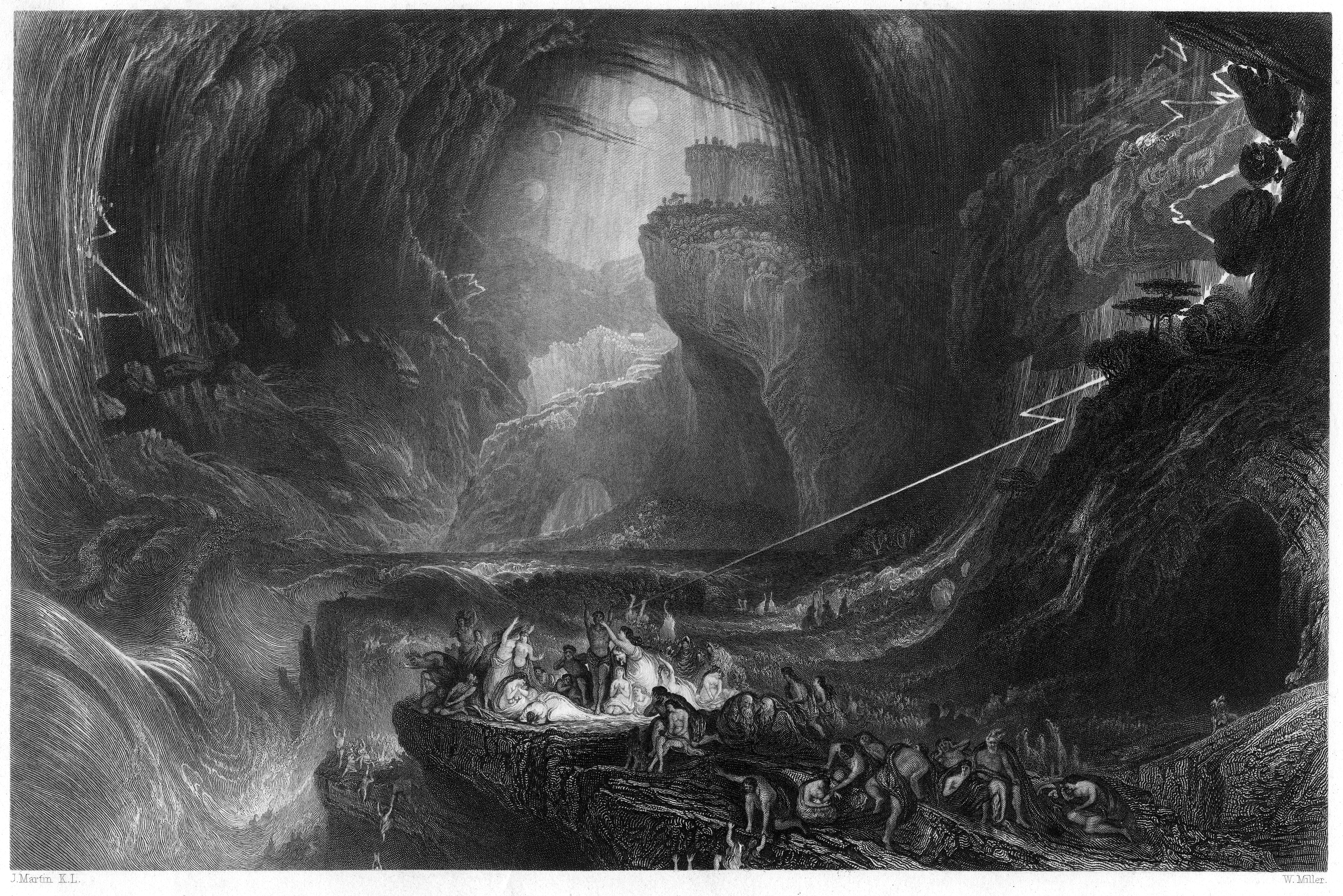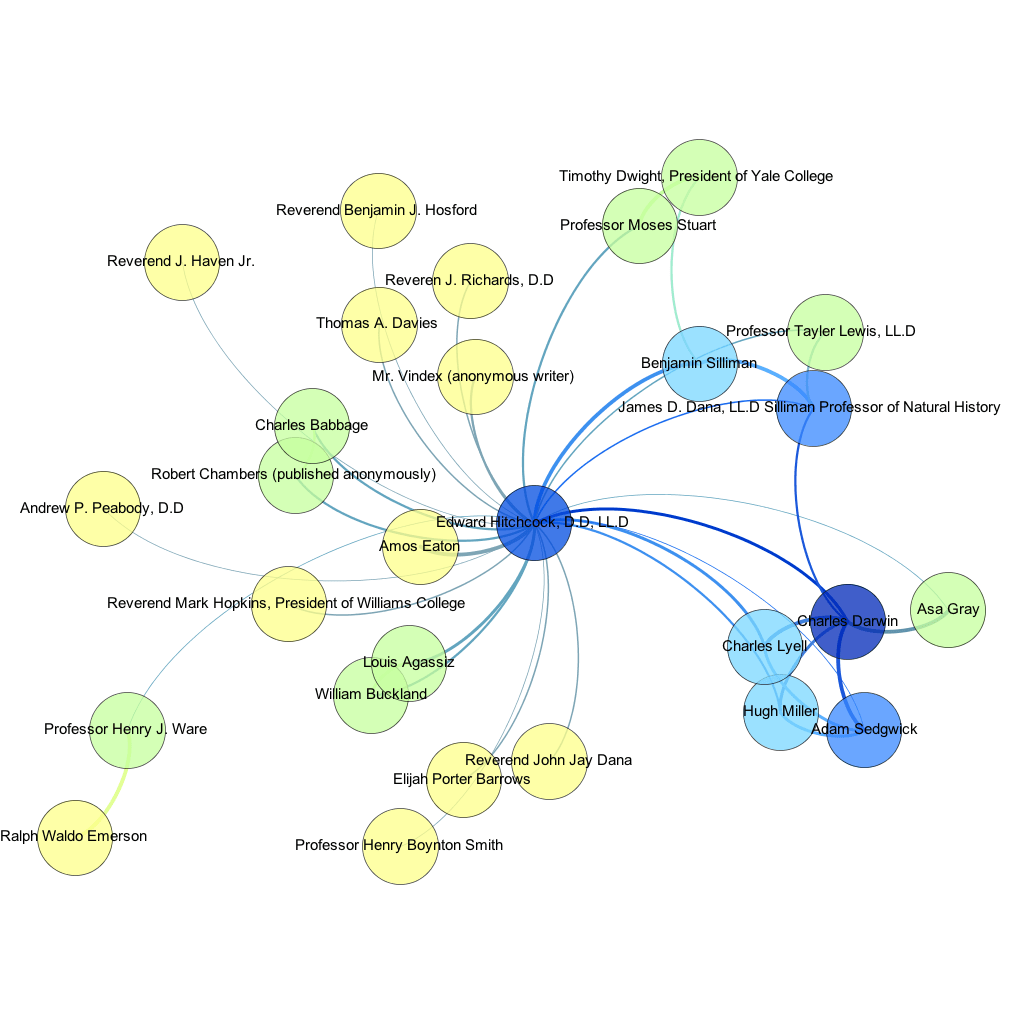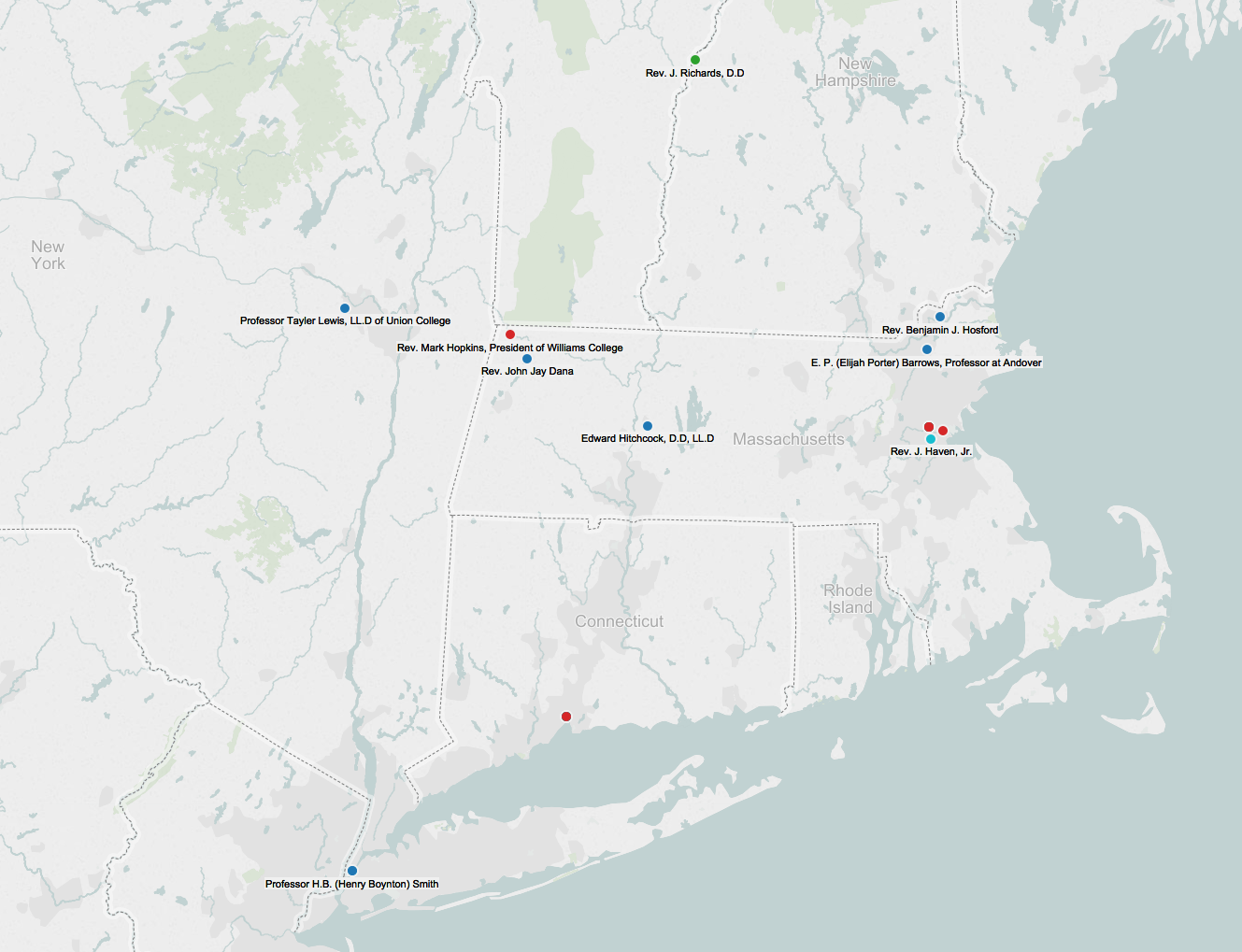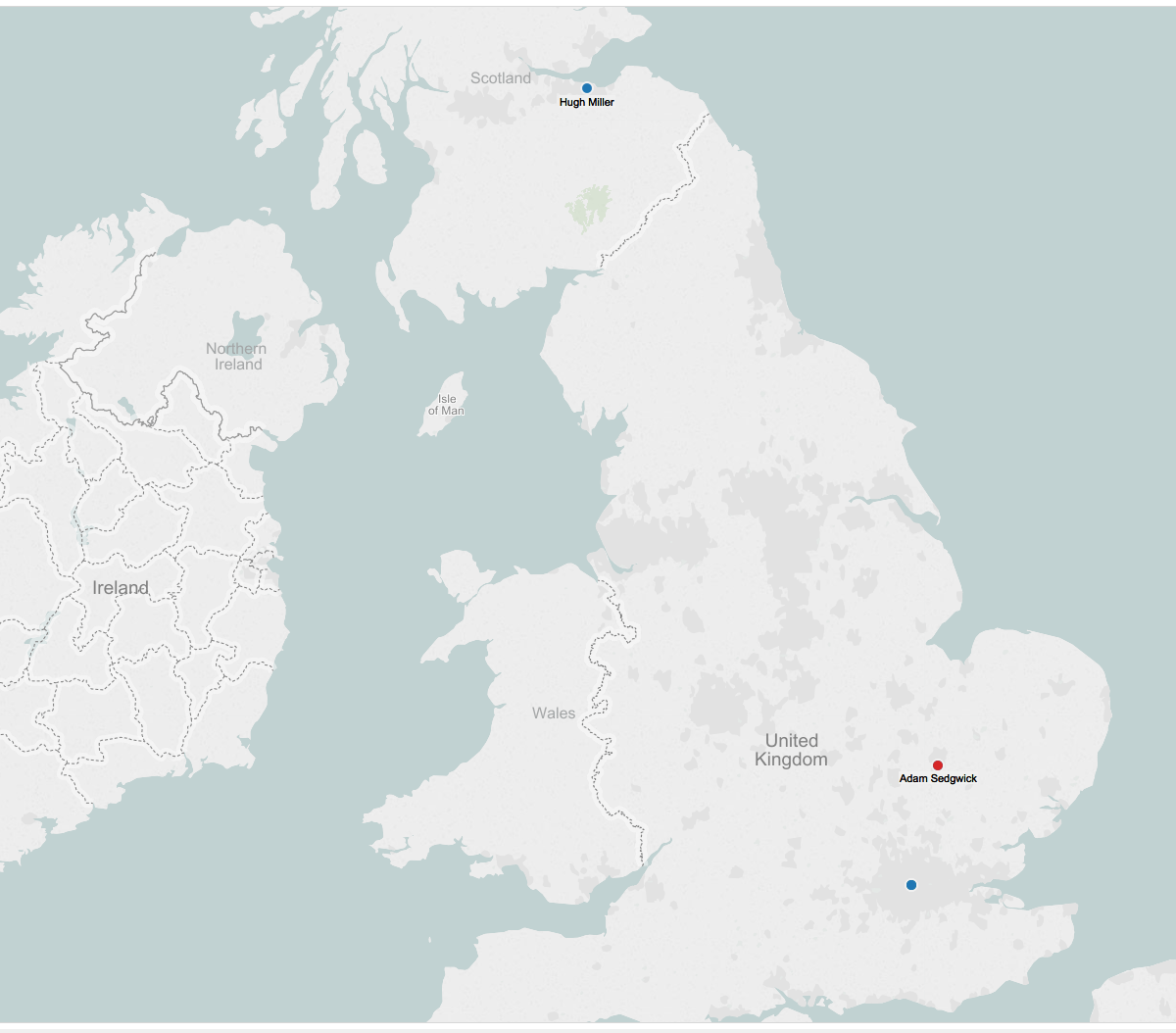“As a Christian philosopher, he welcomed every discovery in Geology and the physical sciences, never doubting that they would not only harmonize with, but illustrate and confirm the Sacred Scriptures.”
Taken from The wise man of the Scriptures, or, Science and Religion: a discourse delivered in the village church in Amherst, March 2d, 1864, at the funeral of Rev. Prof. Edward Hitchcock, delivered by William S. Tyler
By the time of his death in 1864, Edward Hitchcock had left quite an impression in the both realms of natural science and contemporary Christian thought. As both an esteemed geologist and theologian, Hitchcock spent much of his life advocating for the marriage of religion and the natural sciences, arguing that the study of geology in particular was a most productive way to illuminate and better understand the words of the scriptures. While it was not uncommon in his time to support both scientific inquiry and religious piety respectively, it was less common and quite frankly controversial to attempt to reconcile the two in the way that Hitchcock did. In fact, many of his detractors did not critique his work in an effort to invalidate or promote one field over the other; instead they simply (and quite fiercely) contested the value and the rationality of trying to relate the two.
In addition to writing a number of larger works on religion, geology, and the relationship between the two, Hitchcock published a number of papers in various religious journals such as The Bibliotheca Sacra and the Biblical Repository. He actively engaged with religious and scientific scholars alike on topics such as the Deluges, creationism and cosmogony, natural laws and the miraculous, and the general overlaps of science and scripture.

A small portion of the community of scholars with which Hitchcock engaged is displayed in the following Social Network Visualization. The “connectedness” of
each individual is described by the color of the corresponding node, the lighter circles representing less connected individuals and the darker circles representing more connected individuals. “Connected” in this case most simply refers to the number of external connections, or those outside of their relations
hip to Hitchcock. The thickness of the lines is determined by the strength of the various connections, thinner lines corresponding to weaker or more casual relationships, such as publishing in the same journals, while thicker lines represent relationships such as mentorships or collaborative partnerships, friendships, and familial ties.
The larger image is viewable in the gallery below.
“I now proceed to establish my general proposition, by showing, in the first place, that all scientific truth is adapted to prove the existence or to illustrate the perfections of the Deity.”
-Edward Hitchcock in The Religion of Geology and Its Connected Sciences
“Overall, he promoted the idea of a concordance of the two books, of nature and of scripture. As he later put the matter, “the principles of science, rightly understood, should not contradict the statements of revelation, rightly interpreted” (Elementary Geology, 1840 ed., p. 264). Though these ideas were not new, they were forcefully argued.”
-The American National Biography Online

During the mid 19th century, scientific inquiry was at a high point both in the states and abroad. Charles Darwin’s On the Origin of Species would be published in 1859, right in the heat of discussions over whether scientific inquiry illuminated or disproved creationism and other biblical truths. During this time a number of factions formed, factions which transcended denomination, geography, and levels of education. While many scholars considered themselves Unitarian, Calvinist, and Christian Geologists among other things, intense debates about topics such as the mosaic of creation, the Deluges, miracles and biblical interpretation divided them, as no one group was entirely of the same mind on any one matter. However, almost all of the scholars who identified closely with any religion, joined in fervently rejecting Darwin’s theory of evolution.
This map shows a grouping of intellectuals involved in the conversations, coded by color according to how closely they aligned with Edward Hitchcock’s beliefs. The colors go from blue to red, red being the furthest from Hitchcock’s beliefs and the green point representing a rather “neutral” individual. Here is an additional map which includes more detail about each of the scholar’s individual philosophies, including those of Charles Darwin and other European scientists and theologians of the time.
The larger image of this map and a similar map of the UK is viewable in the gallery below.
Sources:
Guralnick, Stanley M. Geology and Religion Before Darwin: The Case of Edward Hitchcock, Theologian and Geologist (1793-1864). Place of publication not identified: ISIS, 1972. Print.
Making Biblical Scholarship Accessible Since 2001. (2001). Retrieved August 5, 2015, from http://www.biblicalstudies.org.uk/
Paul Theerman, . “Hitchcock, Edward“; http://www.anb.org/articles/13/13-00763.html; American National Biography Online Feb. 2000.



